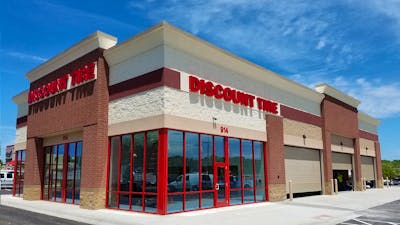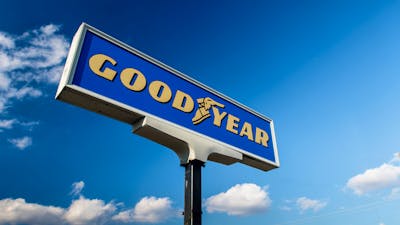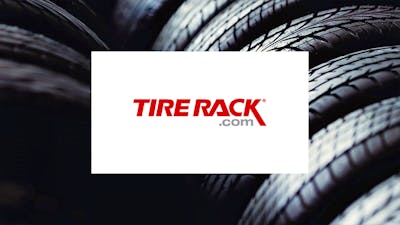Why Some Owners Dislike Their OEM Tires
If you are a tire fanatic like me, you may notice the endless social media posts from vehicle owners saying they truly don't like the tires their vehicle came equipped with from the factory. I don’t just own 19 tires for three vehicles. I also test and review tires for a living, along with banging out other content for Car Talk. After decades of doing this work, I have figured out why so many of us despise the original tires our rides come with.
Get the Best Deals on Tires
For some owners, the fact that their tires are worn out by 40,000 miles is outrageously terrible. Others head up to ski country and are shocked at how slippery the car feels on its OEM tires. Sound familiar? If so, let us explain how this came to be.
Every Tire Is Designed With Seven Main Attributes - Which Are Your Top Priorities?
Imagine that you can design the tire that will be fitted to your car, truck, crossover, or SUV. From the strengths category, you can choose just two that your vehicle tire will possess. When you choose, the other attributes move lower in their capabilities. Let’s start by listing the seven main design criteria for a tire:
- Affordability - Cost, price, investment… Call it what you like.
- Durability - How many miles until the tire has worn to the tread wear bars?
- Noise - Do you like your tires to hum loudly on the highway or be whisper quiet?
- Dry weather performance - Stopping, handling, turning. Do you want it to be good, or do you not really care?
- Wet weather performance - Same ideas above, but now it’s raining.
- Winter performance - Does your tire design need to work very well in ice and snow, not at all, or just so-so?
- Fuel economy
What 90% of Vehicle Designers Choose - Affordable All Season Tires With Great MPG Ratings
It may not be a shock to discover that the first attribute any automaker is going to consider when deciding on an OEM tire is the price. Take the Toyota RAV4, one of America’s most popular vehicles overall. Toyota is going to sell nearly half a million of them this year in the U.S. without even trying. If the tires the RAV4’s product manager chooses cost $10 more (each) than another option, that means that Toyota’s stockholders lose $20,000,000. Or perhaps one hundred entry-level workers don’t get hired. Toyota sells about 11 million vehicles globally each year. Opting for a tire that costs $10 more than the next best choice means that the company spends nearly half a billion more on tires. As you can see, the tire chosen for each vehicle has to be among the most affordable that gets the job done.
Automakers need to report to the EPA what their cars will be capable of in terms of MPG, so a tire with a low rolling resistance, now labeled “green tires,” is almost always the default. Low rolling resistance tires do not have the very best wet-weather traction, nor are they outstanding in snow, since they must have relatively mild tread patterns. You may not care about your personal mileage, but a half-MPG difference can sure make a big difference to an automaker trying to hit a 30 MPG Combined Fleet EPA target.
Without being overly cynical, let me say from the heart that I've got nearly four decades of vehicle ownership under my belt and I have rarely ever worn the full tread off of the tires that came with my new car. Instead, flats or damage have more often ended their life. Some simply got too old to be safe. Since I favor all-wheel drive vehicles here in wintery New England, if one tire is destroyed when the other three have about 25% tread remaining, I’m going to be buying four anyway since the differentials cannot handle the uneven rolling diameter of one taller tire.
Automakers are not really planning for you to drive half of the vehicle’s life on its original set of rubber. Tires with long tread life do exist. And they frequently come with other trade-offs such as greater noise, reduced wet weather performance, or higher cost.
No automaker is going to equip a new car with tires that hum or hiss and add to cabin noise. If they do, reviewers at all the major outlets are going to hear that noise and report it in their reviews. Some reviewers even use decibel meters to emphasize the noise they hear and want to scare you about. For that reason, automakers favor tires that are quiet in any scenario. Do you know what tires are often very loud? Ones that have great winter traction.
While you personally may really want a tire that is great in winter, half of America doesn’t care. There are many states where it never snows on the roads. In many other states, winter is mild enough that nobody wants to sacrifice any of the other six attributes one iota to ensure better winter traction. So in nearly all cases, automakers opt to pick a tire that is either not rated for snow at all (such as with many sports cars) or has just enough capability to get you home on an inch or two of powdery snow without any drama.
Wet weather and dry weather performance, along with winter traction, are all at odds with one another. If you maximize one, the other two suffer. Some new designs do an admiral job of offering great winter performance without reducing the dry and wet performance much. The Michelin CrossClimate2 is perhaps the best example of that. But guess what? They are rarely the least expensive or the longest-lasting tire in their given size.
At the end of the day, many vehicle owners with around 30,000 miles on the odometer start shopping for “better” tires. Better to that individual shopper may mean improved winter performance, improved wet-weather traction, or crisper handling. Such tires definitely exist. But they come with poorer fuel economy or perhaps a louder ride. And compared to the cost of the OEM-specified original tires, they may be as much as 50% higher in price.
The real reason so many of us dislike the tires our vehicle comes with is that we have personal preferences and driving styles. Who doesn’t? Your preferences may not be affordability, fuel economy, and noise. The three attributes that all OEM tires have these days.
The Good News!
One attribute that we overlooked in our original seven is off-pavement capability. Many crossover and SUV owners drive off pavement or like to fantasize about doing so. I’m guilty as charged for both of these activities. A new generation of trail tires that work great in almost all scenarios and even come with the severe snow duty rating that winter tires are stamped with are now available. The Falken WildPeak series is the current popular pick. You can now get these tires from Toyota right from the factory mounted on a RAV4 Hybrid Woodland Edition, from Mazda on a CX-50 Meridian, or as original tires on a Ford Bronco Sport. More and more automakers are adopting this style of tire for SUVs and crossovers. It is nice to see this happening, and we hope it spreads across the industry.
As you can see, there is a reason why you may not love the original tires that your vehicle was equipped with. If so, check out our listings of Best Tires for some of the very best in a wide range of categories.
FAQ
- What are OEM tires?
OEM stands for Original Equipment Manufacturer. OEM tires, also called stock tires, are simply the tires that the manufacturer decides to put on your vehicle during production.
- Are OEM tires bad?
OEM tires vary depending on the make and model of vehicle you purchase. The manufacturer will have made a choice to use tires that are cost effective and have the best MPG rating. Your driving style and your location will determine whether or not OEM tires are good for you.
- Where do I shop for the best prices on replacement tires?
Several online retailers like Discount Tire and SimpleTire offer regular discounts and free shipping for their tires. Their sites also have tire fit guides and pricing estimators to help you understand what you’re buying. Read more on the Best Places to Buy Tires Online and Save Hundreds here.
- What are the best tire brands in the industry?
The best tire brands in the industry right now are Michelin and Continental, depending on what you are looking for in tires. Read more on the 10 Best Tire Brands in the Industry here.













